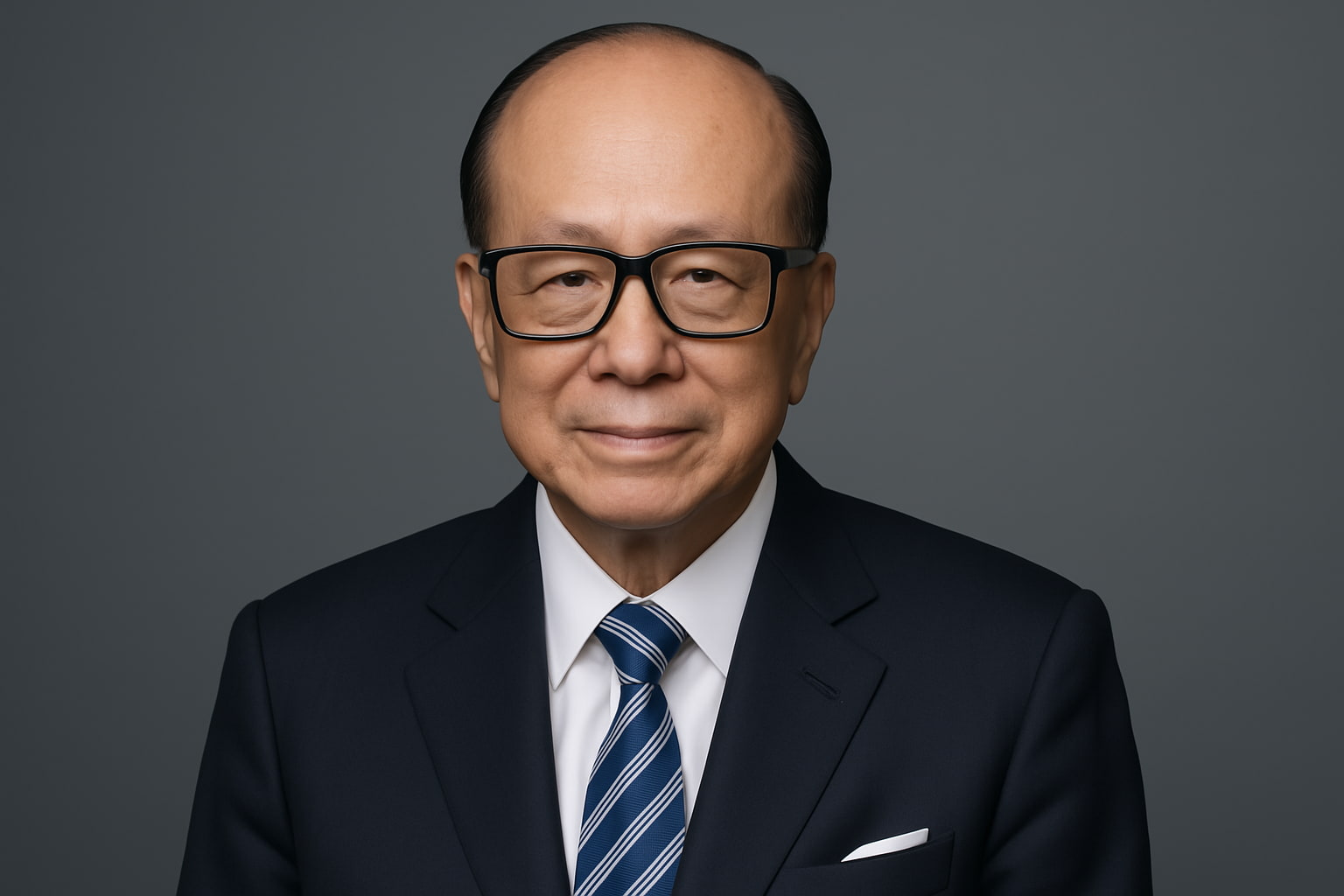Table of contents
Li Ka-shing stands as one of Asia’s most remarkable success stories, transforming from a penniless refugee into Hong Kong’s richest man. Born into poverty in mainland China, he fled to Hong Kong as a child refugee during the Sino-Japanese War. His father’s tragic death from tuberculosis forced him to abandon his education at just 15 years old. Working 16-hour days in a plastics factory, young Li supported his family while harboring dreams of a better future.
Today, Li Ka-shing commands a business empire worth over $37 billion. His journey from factory worker to business magnate exemplifies the power of determination, strategic thinking, and unwavering perseverance. This extraordinary transformation didn’t happen overnight. It required decades of calculated risks, innovative thinking, and an unshakeable belief in his ability to reshape his destiny.
The story of Li Ka-shing resonates with entrepreneurs worldwide because it proves that circumstances don’t define destiny. His rise from extreme poverty to unimaginable wealth demonstrates how vision, hard work, and strategic decision-making can overcome even the most challenging beginnings. Through plastic flowers, real estate investments, and global acquisitions, Li built an empire that spans continents and industries.
Early Life & Struggles
A Childhood Marked by War and Poverty
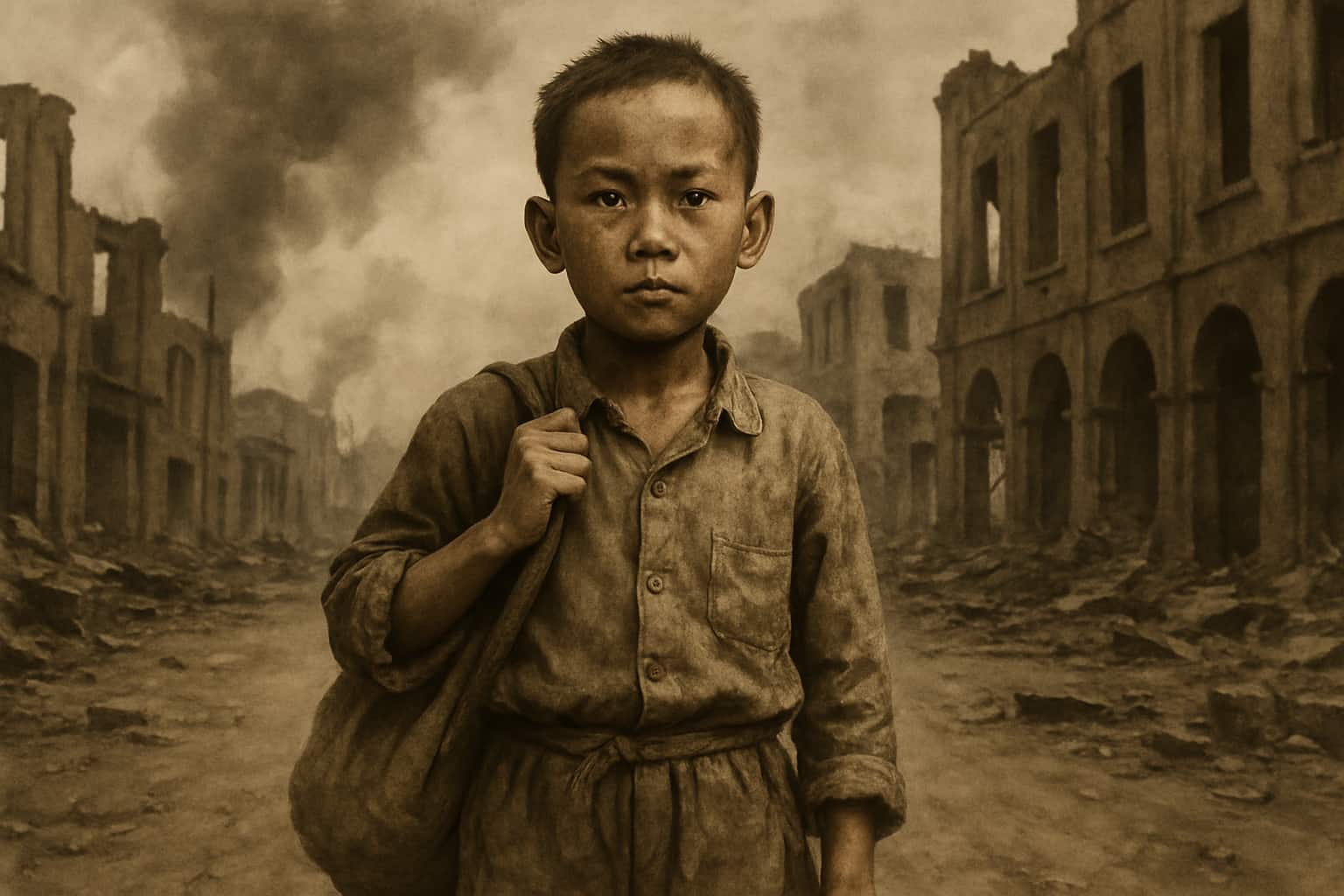
Li Ka-shing was born on July 29, 1928, in Chao’an, Chaozhou, Guangdong Province, China, to Teochew parents Li Yun-ching and Cheung Bik-chin. His early years unfolded against the backdrop of political turmoil and economic instability that plagued China during the 1930s. The family lived modestly, with his father working as a teacher in their small hometown.
Everything changed in 1940 when the Sino-Japanese War forced the Li family to flee their homeland. Like millions of other Chinese families, they became refugees, abandoning everything they knew to seek safety in Hong Kong. The 12-year-old Li Ka-shing found himself in a foreign place, speaking a different dialect, with no money and uncertain prospects.
Hong Kong in the 1940s offered little comfort to refugees. The British colony was overcrowded, resources were scarce, and opportunities for mainland Chinese immigrants were extremely limited. The Li family struggled to establish themselves in this new environment. They lived in cramped quarters, sharing space with other refugee families who had fled the war.
The Devastating Loss That Changed Everything
Tragedy struck the Li family in 1943 when Li Ka-shing’s father contracted tuberculosis. Without access to proper medical care or the financial means to afford treatment, Li Yun-ching’s condition deteriorated rapidly. The family watched helplessly as the patriarch grew weaker each day.
Li Ka-shing later reflected on this period as the most terrible experience of his childhood. “The most terrible experience during my childhood was witnessing my father’s suffering and ultimately dying of TB,” he recalled in a Forbes interview. “I too was infected. The burden of poverty and this bitter taste of helplessness and isolation sort of branded on my heart forever.”
His father’s death left the family in desperate circumstances. At just 15 years old, Li Ka-shing became the primary breadwinner for his mother and younger siblings. The weight of responsibility fell heavily on his young shoulders. He was forced to abandon his formal education, a sacrifice that would haunt him throughout his life but also fuel his determination to succeed.
The experience of watching his father die in poverty because they couldn’t afford proper medical care left an indelible mark on Li Ka-shing’s psyche. This traumatic event would later drive his massive philanthropic efforts in healthcare and education. It also instilled in him three fundamental questions that would guide his entire business philosophy: “Is it possible to reshape one’s destiny? Is it possible to minimize challenges through lessening complexities? And is it possible to enhance chances for success through meticulous planning?”
Learning the Value of Hard Work

With no other options available, Li Ka-shing found employment at a plastics trading company. The work was grueling and the pay was minimal. He worked 16-hour days, learning every aspect of the plastics business from the ground up. Despite the exhausting schedule, he approached his work with remarkable dedication and curiosity.
During these early working years, Li Ka-shing developed habits that would serve him throughout his career. He arrived early, stayed late, and absorbed every piece of information he could about the business. He studied trade publications during his breaks and asked countless questions about manufacturing processes, customer relationships, and market dynamics.
The young man’s work ethic didn’t go unnoticed by his employers. Despite his youth and lack of formal education, Li Ka-shing demonstrated an intuitive understanding of business principles. He showed particular aptitude for understanding customer needs and identifying market opportunities that others overlooked.
These formative years in the plastics factory taught Li Ka-shing invaluable lessons about cash flow management, operational efficiency, and customer service. More importantly, they instilled in him a deep appreciation for the value of money and the importance of financial prudence. “Managing a family on a tight budget is hard, but managing a company with a tight cash flow is even harder,” he would later observe.
Turning Points
The Decision to Go Independent
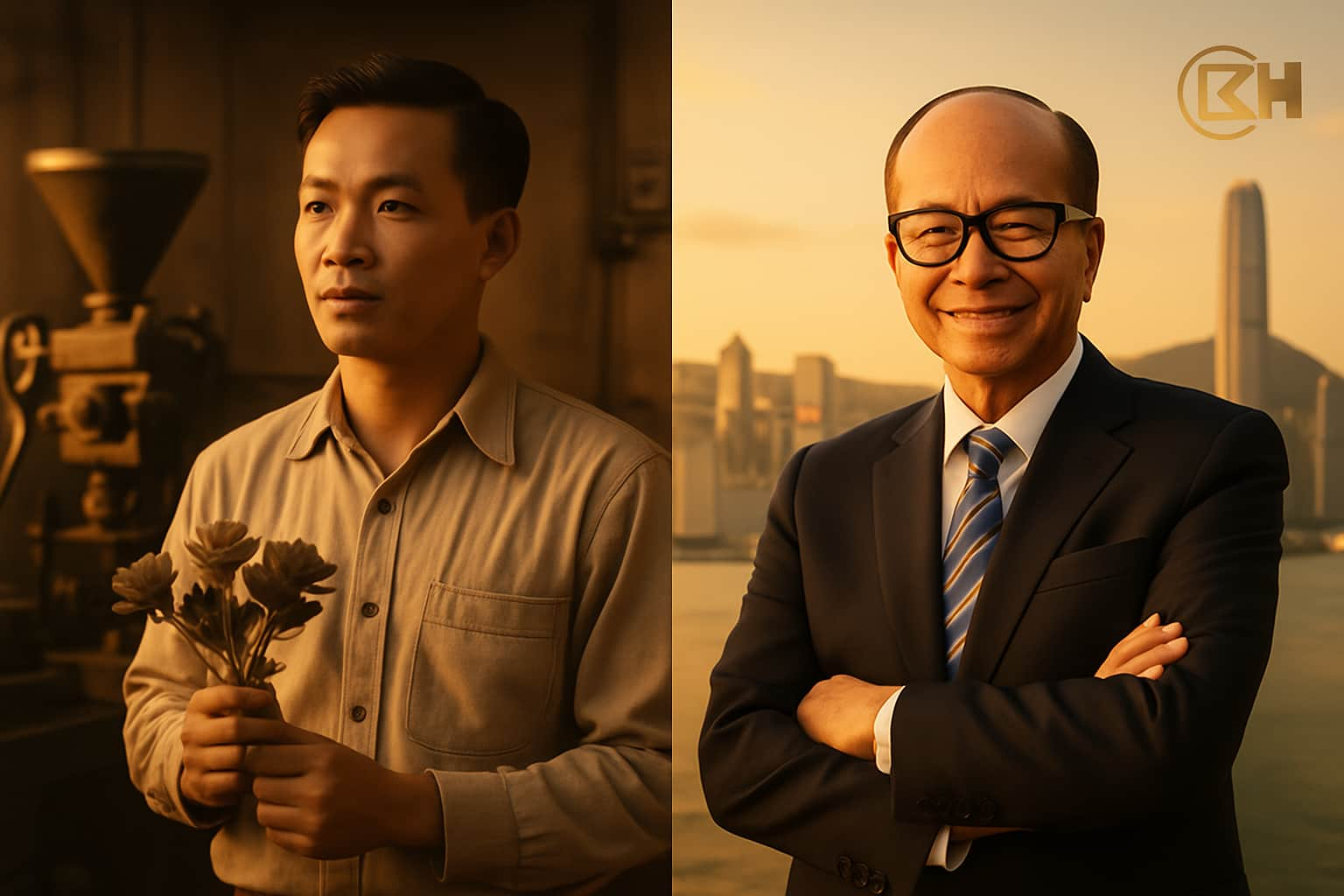
By 1950, at the age of 22, Li Ka-shing had accumulated enough knowledge and modest savings to contemplate starting his own business. This decision represented a massive leap of faith for someone who had experienced such profound poverty and loss. However, his years of working in the plastics industry had given him confidence in his abilities and a clear vision of market opportunities.
Li Ka-shing founded his plastic manufacturing company with personal savings of approximately $6,500 and additional funds borrowed from relatives. He named the company Cheung Kong Industries, after the Yangtze River, symbolizing his ambition to create something as powerful and enduring as China’s longest river.
Starting a business with such limited capital required extreme frugality and careful planning. Li Ka-shing operated from a small factory space, often working alone or with just one or two employees. He handled everything from production to sales, customer service to accounting. This hands-on approach gave him intimate knowledge of every aspect of his business.
The early days were challenging, with Li Ka-shing working even longer hours than he had as an employee. However, he now had something he had never possessed before: control over his destiny. Every decision, every risk, and every potential reward was his to make and bear.
The Plastic Flowers Revolution
Li Ka-shing’s breakthrough came when he identified a unique opportunity in the plastic flowers market. Through his extensive reading of trade publications and business news, he discovered that artificial flowers were becoming increasingly popular in Western markets, particularly in the United States. However, most manufacturers were producing low-quality products that looked obviously fake.
Li Ka-shing saw an opportunity to revolutionize this market by creating plastic flowers that closely resembled real ones. He invested significant time and resources into developing new techniques for mixing colors with plastics. Through experimentation and persistence, he perfected a process that created remarkably realistic-looking artificial flowers.
The innovation required him to retool his entire factory, a risky investment for a company with limited resources. However, Li Ka-shing believed that superior quality would command premium prices and create lasting customer relationships. He prepared meticulously for his first major sales presentation to a large foreign buyer.
When the foreign buyer visited his factory, Li Ka-shing was ready. The quality of his plastic flowers impressed the buyer, who placed a substantial order that transformed the young entrepreneur’s fortunes overnight. This single order validated his strategy and provided the capital needed for rapid expansion.
Within a few years, Li Ka-shing had become the largest supplier of plastic flowers in Asia. His products were exported to markets around the world, generating substantial profits that he reinvested into expanding production capacity and developing new product lines. The success of his plastic flowers business established him as a rising star in Hong Kong’s manufacturing sector.
Strategic Diversification into Real Estate
By 1958, Li Ka-shing had achieved considerable success in manufacturing, but he recognized that long-term wealth creation required diversification into other sectors. His analysis of Hong Kong’s economic trends led him to believe that real estate represented the most promising opportunity for substantial growth.
Li Ka-shing’s entry into real estate began with a practical need: purchasing a site to develop his own factory building. However, this initial investment opened his eyes to the potential of property development. He began studying Hong Kong’s real estate market with the same intensity he had applied to the plastics business.
His first major real estate opportunity came during the 1967 Hong Kong riots, when political unrest caused property prices to plummet as many residents fled the territory. While others saw crisis, Li Ka-shing saw opportunity. He believed that the political turmoil was temporary and that property values would eventually recover and exceed their previous levels.
Using profits from his plastics business, Li Ka-shing began purchasing land from fleeing residents at significantly discounted prices. This contrarian investment strategy required enormous courage and conviction. Many observers questioned his judgment, but Li Ka-shing remained confident in his analysis of Hong Kong’s long-term prospects.
His real estate investments proved prescient. As political stability returned to Hong Kong, property values rebounded dramatically. Li Ka-shing’s early acquisitions generated substantial returns, providing him with the capital and credibility needed to pursue larger development projects.
Breakthrough Success
Building the Cheung Kong Empire
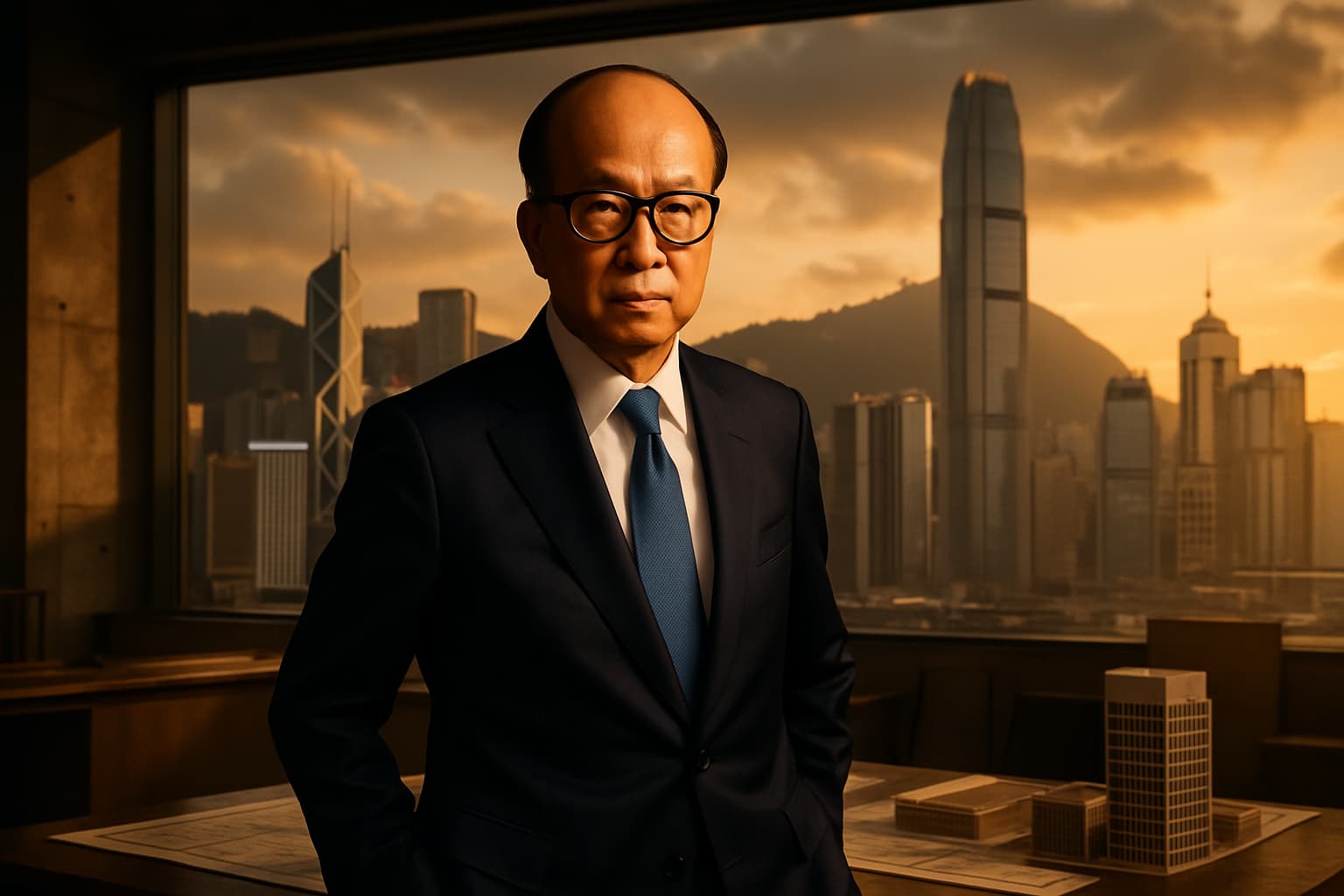
In 1971, Li Ka-shing officially established Cheung Kong Holdings as his real estate development company. The following year, he took the company public on the Hong Kong Stock Exchange, marking a significant milestone in his business career. The public listing provided access to capital markets and enhanced his ability to pursue ambitious development projects.
Cheung Kong’s public debut was met with considerable investor interest. Li Ka-shing’s track record in both manufacturing and real estate had established his reputation as a shrewd businessman with an exceptional ability to identify and capitalize on market opportunities. The company’s shares performed well, validating investor confidence in his leadership.
During board meetings, Li Ka-shing articulated his ambitious goal of surpassing Jardines-owned Hongkong Land as Hong Kong’s leading property developer. This objective seemed audacious given Jardines’ long-established dominance in the territory’s real estate market. However, Li Ka-shing’s strategic vision and execution capabilities would prove equal to this challenge.
The successful bid by Cheung Kong for development sites above the Central and Admiralty MTR stations in 1977 represented a watershed moment in the company’s evolution. This high-profile project demonstrated Li Ka-shing’s ability to compete with established players for the most prestigious development opportunities in Hong Kong.
These MTR station developments became iconic symbols of Hong Kong’s modernization and established Cheung Kong as a major force in the territory’s real estate market. The projects’ commercial success generated substantial profits and enhanced Li Ka-shing’s reputation as a visionary developer who could deliver exceptional results.
The Hutchison Whampoa Acquisition
Li Ka-shing’s most audacious move came in 1979 when he acquired a controlling stake in Hutchison Whampoa, one of Hong Kong’s oldest and most prestigious trading houses. This acquisition represented a seismic shift in Hong Kong’s business landscape, as it marked the first time a Chinese entrepreneur had gained control of a major British colonial trading company.
The Hutchison Whampoa acquisition required sophisticated financial engineering and strategic planning. Li Ka-shing structured the deal through Cheung Kong Holdings, using a combination of cash, debt financing, and share exchanges. The complexity of the transaction demonstrated his growing sophistication as a dealmaker and strategic thinker.
Hutchison Whampoa brought Li Ka-shing immediate access to diverse business operations including ports, telecommunications, retail, and energy. The company’s established international presence provided a platform for global expansion that would have taken decades to build organically. This acquisition transformed Li Ka-shing from a successful Hong Kong developer into a multinational business magnate.
The integration of Hutchison Whampoa into Li Ka-shing’s business empire required careful management and strategic vision. He retained key management personnel while implementing his own operational philosophies and growth strategies. The successful integration demonstrated his ability to manage complex organizations across multiple industries and geographies.
Under Li Ka-shing’s leadership, Hutchison Whampoa expanded aggressively into new markets and business sectors. The company’s port operations grew to become among the world’s largest, while its telecommunications investments positioned it at the forefront of the mobile communications revolution.
Expanding the Retail Empire
Li Ka-shing’s acquisition of Hutchison Whampoa included AS Watson, which would become one of Asia’s largest retail operations. Under his leadership, AS Watson expanded from a small Hong Kong pharmacy chain into a multinational retail empire with over 15,000 stores across multiple countries and formats.
The expansion of AS Watson demonstrated Li Ka-shing’s ability to scale retail operations across diverse markets and cultures. The company’s portfolio grew to include health and beauty retailers like Watson’s and Superdrug, supermarket chains like PARKnSHOP, and electronics retailers like Fortress. Each format required different operational expertise and market strategies.
Li Ka-shing’s approach to retail expansion emphasized local adaptation while maintaining operational efficiency. He understood that successful retail operations required deep understanding of local consumer preferences and shopping behaviors. This philosophy enabled AS Watson to succeed in markets as diverse as Europe, Asia, and the Middle East.
The retail empire’s success generated substantial cash flows that Li Ka-shing reinvested into other business opportunities. The predictable nature of retail revenues provided a stable foundation that supported more speculative investments in emerging technologies and new markets.
Key Business Moves
Strategic Asset Trading and Value Creation
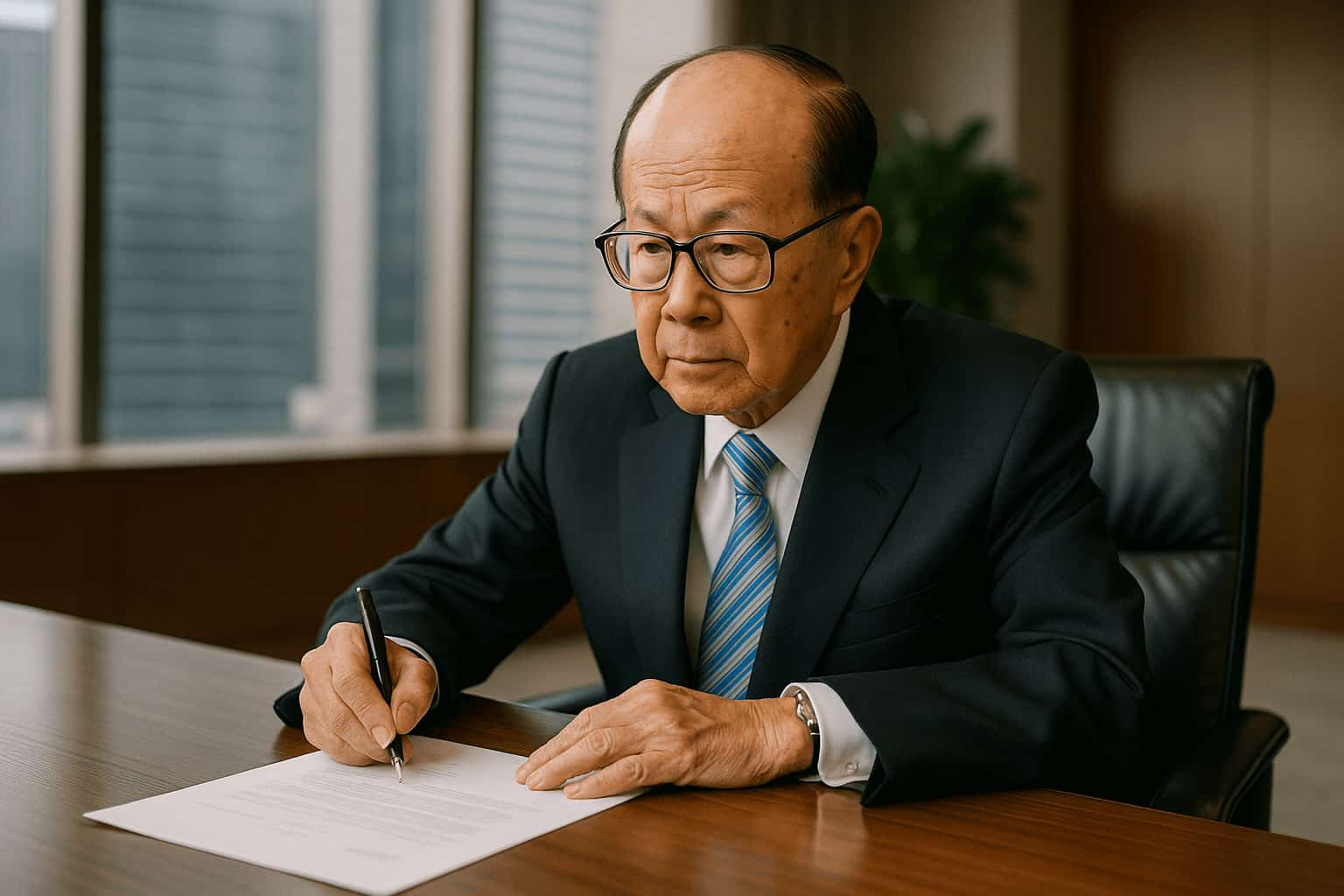
Li Ka-shing developed a sophisticated approach to asset trading that involved building businesses to scale and then selling them at optimal valuations to create shareholder value. This strategy required exceptional timing and market insight, as well as the discipline to sell successful businesses when valuations reached peak levels.
One of his most successful asset trades involved the sale of Orange, a UK mobile telecommunications company, to Mannesmann Group in 1999. Li Ka-shing had built Orange into a major player in the rapidly growing mobile communications market. The sale generated a profit of $15.12 billion, demonstrating his ability to create and capture enormous value through strategic investments.
The Orange transaction exemplified Li Ka-shing’s investment philosophy of entering emerging industries early, building market-leading positions, and then monetizing these investments when market conditions were optimal. This approach required significant capital investment and operational expertise, but it generated exceptional returns when executed successfully.
Another major asset sale involved 20% of Hutchison’s ports business to Singapore rival PSA Corporation in 2006. This transaction generated a $3.12 billion profit on a $4 billion deal, while allowing Hutchison to maintain control of its core port operations. The sale demonstrated Li Ka-shing’s ability to optimize capital allocation while retaining strategic assets.
Li Ka-shing’s asset trading strategy extended to telecommunications investments in India, where Hutchison Telecommunications sold a controlling stake in Hutchison Essar to Vodafone for $11.1 billion. These transactions consistently generated substantial returns while allowing Li Ka-shing to redeploy capital into new opportunities.
Technology and Innovation Investments
Recognizing the transformative potential of technology, Li Ka-shing established Horizons Ventures as his dedicated investment and venture capital firm focused on backing internet and technology startups. This initiative demonstrated his ability to adapt his investment strategy to capitalize on emerging trends and disruptive technologies.
Horizons Ventures made early investments in companies that would become technology giants. The firm’s investment in Facebook, purchasing a 0.8% stake for $120 million across two rounds, generated substantial returns as the social networking platform grew into one of the world’s most valuable companies.
Li Ka-shing’s technology investments extended to music streaming through an estimated $50 million investment in Spotify. These investments demonstrated his ability to identify promising technology companies before they achieved mainstream recognition and commercial success.
The Li Ka Shing Foundation also made strategic technology investments, including backing various artificial intelligence and biotechnology companies. These investments reflected Li Ka-shing’s belief that technology would drive future economic growth and create new opportunities for value creation.
His approach to technology investing combined financial returns with strategic learning. By investing in cutting-edge companies, Li Ka-shing gained insights into emerging trends that informed his broader business strategy and helped him identify new opportunities for his traditional businesses.
Global Expansion and Diversification
Li Ka-shing’s business empire expanded far beyond Hong Kong to encompass operations across multiple continents and industries. This global diversification strategy reduced his dependence on any single market or economic cycle while creating opportunities to capitalize on growth in emerging markets.
His port operations expanded to become among the world’s largest, with facilities in Europe, Asia, the Americas, and the Middle East. This global network of ports positioned Li Ka-shing to benefit from the growth in international trade and provided strategic advantages through economies of scale and operational synergies.
The expansion into European markets included significant investments in utilities, telecommunications, and retail operations. These investments provided exposure to stable, developed markets with predictable cash flows that complemented his more volatile investments in emerging markets and new technologies.
Li Ka-shing’s global expansion strategy emphasized acquiring established businesses with strong market positions rather than building operations from scratch. This approach reduced execution risk while providing immediate access to local expertise and customer relationships.
The geographic diversification of his business empire provided natural hedging against economic downturns in any single market. When Asian markets experienced difficulties, his European and American operations often performed well, and vice versa. This diversification strategy contributed to his remarkable track record of generating profits every year for over six decades.
Major Real Estate Transactions
Li Ka-shing’s real estate strategy evolved to include not just development but also strategic asset sales that generated enormous profits. His sale of The Center, Hong Kong’s fifth-tallest skyscraper, for HK$40.2 billion (US$5.15 billion) constituted the largest office space real estate sale in the Asia-Pacific region.
The Center transaction demonstrated Li Ka-shing’s ability to maximize asset values through optimal timing and sophisticated marketing. The building had been developed by his companies and held for many years, allowing him to capture both development profits and long-term appreciation in one of Hong Kong’s most prestigious locations.
Another major transaction involved the sale of the Century Link complex in Shanghai for US$2.95 billion, representing the second-largest transaction for a single building according to the Financial Times. These sales reflected Li Ka-shing’s strategy of monetizing mature real estate assets to fund new investments and return capital to shareholders.
His real estate transactions often involved complex structuring to optimize tax efficiency and maximize proceeds. Li Ka-shing’s team developed sophisticated expertise in cross-border real estate transactions that enabled them to execute deals across multiple jurisdictions while minimizing regulatory and tax complications.
The proceeds from these major real estate sales provided Li Ka-shing with substantial capital for new investments and acquisitions. His ability to generate large amounts of cash through asset sales gave him significant flexibility to pursue opportunities that required substantial upfront investments.
Legacy & Lessons Learned
The Philosophy of Sustainable Growth
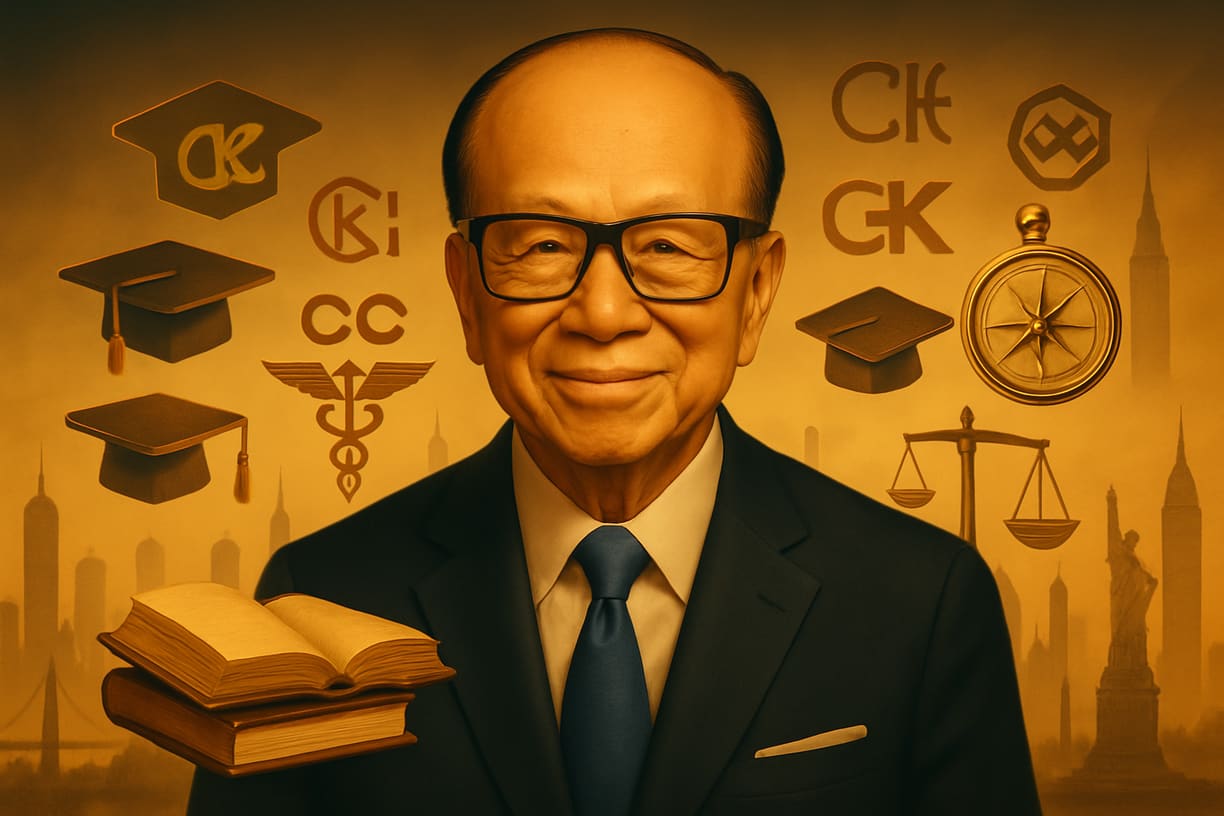
Throughout his career, Li Ka-shing adhered to a fundamental business philosophy he summarized as “seeking growth while maintaining stability.” This approach emphasized the importance of balancing ambitious expansion plans with prudent risk management and financial discipline.
His commitment to maintaining healthy debt-to-equity ratios enabled his companies to weather economic downturns and market volatility that devastated less conservative competitors. This financial discipline also positioned him to capitalize on opportunities that emerged during difficult economic periods when other companies lacked the resources to invest.
Li Ka-shing’s emphasis on cash flow management stemmed from his early experiences with poverty and financial insecurity. He understood that businesses could fail not because they were unprofitable but because they lacked sufficient cash to meet their obligations during temporary downturns.
The principle of maintaining high reserves enabled Li Ka-shing to seize investment opportunities quickly when they arose. While other investors needed time to arrange financing, he could move decisively to acquire assets or companies at attractive valuations.
His approach to risk management focused on methodology rather than avoiding risk entirely. “My interpretation of ‘risk’ has always been, whether the methodology you deploy to seize opportunity is a correct one,” he explained. This perspective enabled him to pursue ambitious ventures while maintaining appropriate safeguards.
Philanthropic Vision and Social Responsibility
Li Ka-shing’s philanthropic activities reflect his belief that successful entrepreneurs have a responsibility to contribute to society’s betterment. His Li Ka Shing Foundation has invested more than HK$30 billion in projects covering education, medical services, charity, and anti-poverty programs.
The foundation’s focus on education stems from Li Ka-shing’s own experience of being forced to abandon his formal schooling. He founded Shantou University in 1981 near his hometown and has donated more than $1 billion to support its development into a world-class institution.
His healthcare philanthropy was motivated by the traumatic experience of watching his father die from tuberculosis because the family couldn’t afford proper medical care. “My father died of tuberculosis when we could not afford medical care. I know the feeling of helplessness and loneliness. This is why I am committed to supporting healthcare initiatives,” he explained.
Li Ka-shing’s pledge to donate one-third of his wealth to charity demonstrates his commitment to using his success to benefit others. His foundation operates as the second-largest private foundation in the world after the Bill & Melinda Gates Foundation, reflecting the scale of his philanthropic ambitions.
The geographic focus of his philanthropy, with 80% of investments centered on projects within Greater China, reflects his desire to give back to the region where he built his fortune. However, his charitable activities also extend globally, including significant donations to institutions like the Lee Kuan Yew School of Public Policy at the National University of Singapore.
Lessons for Aspiring Entrepreneurs
Li Ka-shing’s journey offers numerous lessons for aspiring entrepreneurs facing their own challenges and opportunities. His emphasis on continuous learning, despite his lack of formal education, demonstrates the importance of intellectual curiosity and self-improvement throughout one’s career.
His approach to cash flow management provides a crucial lesson for entrepreneurs who often focus primarily on growth while neglecting financial fundamentals. Li Ka-shing’s insistence on maintaining adequate reserves and healthy debt levels enabled him to survive downturns and capitalize on opportunities.
The importance of long-term thinking emerges clearly from Li Ka-shing’s career. His willingness to invest in real estate during the 1967 riots, when others were fleeing Hong Kong, exemplifies the value of maintaining conviction in long-term trends despite short-term volatility.
His strategy of diversification across industries and geographies provides a model for building resilient business empires. Rather than concentrating all his resources in a single sector, Li Ka-shing spread his investments across multiple industries and markets to reduce overall risk.
Li Ka-shing’s emphasis on understanding customers and markets, developed during his early years in the plastics business, remained central to his success throughout his career. His ability to identify unmet needs and develop innovative solutions created competitive advantages across multiple industries.
The Enduring Impact on Hong Kong and Asia
Transforming Hong Kong’s Economy
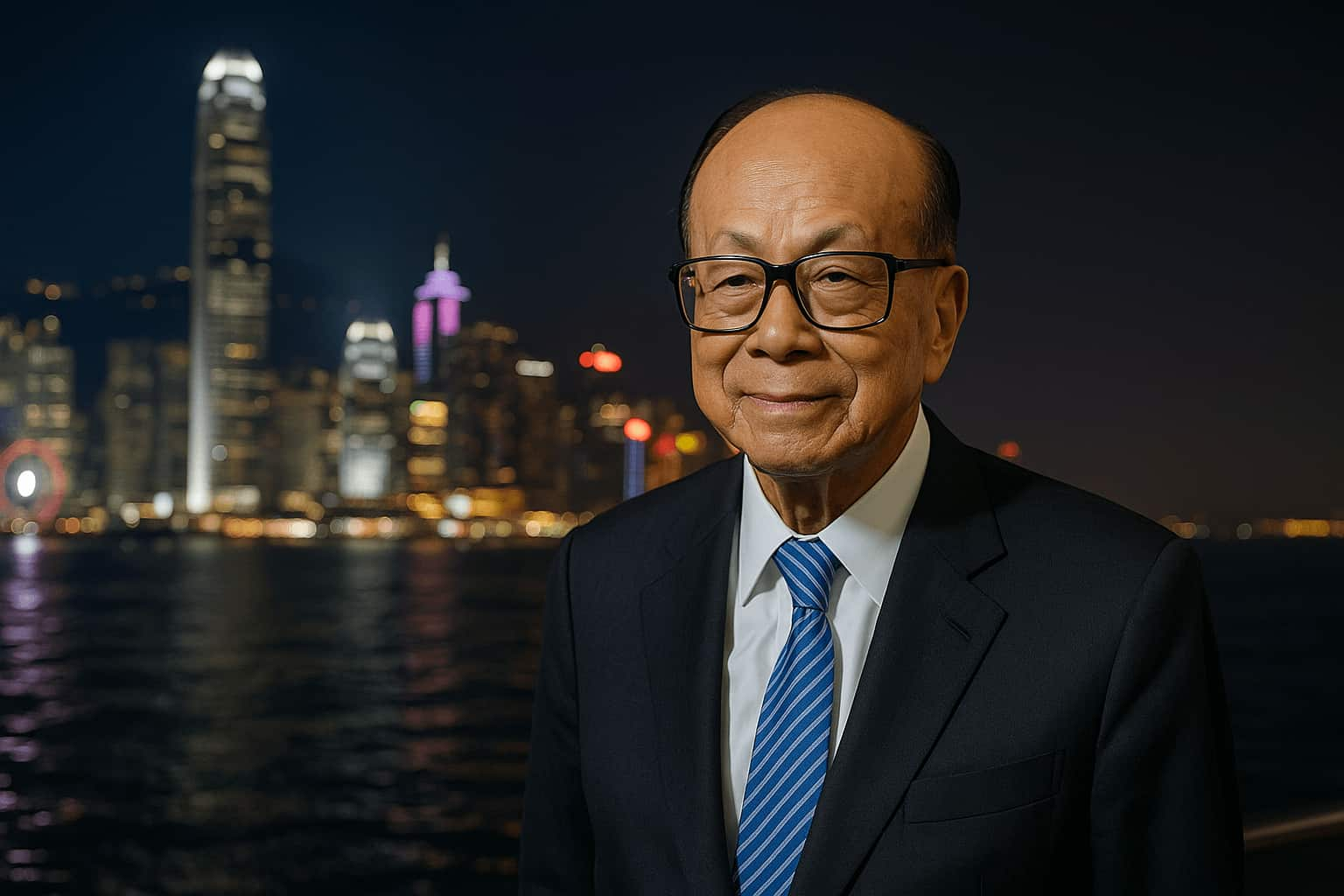
Li Ka-shing’s business empire played a crucial role in Hong Kong’s transformation from a manufacturing center to a global financial and trading hub. His companies provided employment for hundreds of thousands of people and contributed significantly to the territory’s economic development.
Breaking Barriers for Asian Entrepreneurs
His success as a Chinese entrepreneur in a British colonial environment helped pave the way for other Asian business leaders to achieve international recognition and success. Li Ka-shing demonstrated that entrepreneurial talent and business acumen could transcend cultural and ethnic boundaries.
Proving Asia’s Global Business Potential
The global expansion of his business empire helped establish Hong Kong companies as serious competitors in international markets. His success in acquiring and managing businesses across multiple continents showed that Asian companies could successfully operate on a global scale.
A Generational Transition
Li Ka-shing’s retirement in 2018, when he handed over control of his companies to his son Victor Li Tzar-kuoi, marked the end of an era in Hong Kong business. His career spanned the territory’s most dynamic period of growth and development, and his companies remain central to Hong Kong’s economy.
Legacy and Inspiration
Impact Beyond Business
His legacy extends beyond business success to include his contributions to education, healthcare, and social development throughout Asia. The institutions he founded and supported continue to benefit millions of people, ensuring that his impact will endure for generations to come.
A Story of Possibility
The story of Li Ka-shing proves that extraordinary success is possible regardless of one’s starting circumstances. His journey from refugee to billionaire demonstrates the power of determination, strategic thinking, and unwavering commitment to excellence. For entrepreneurs worldwide, his example provides both inspiration and practical guidance for building sustainable, successful businesses while contributing positively to society.
Lasting Lessons for Entrepreneurs
Through decades of calculated risks, innovative strategies, and disciplined execution, Li Ka-shing created one of the world’s great business empires. His story continues to inspire new generations of entrepreneurs who face their own challenges and dream of transforming their circumstances through hard work, vision, and perseverance. The lessons embedded in his remarkable journey remain as relevant today as they were when he first started his plastic flowers business more than seven decades ago.
- From Bullied Dropout to Billionaire: The Extraordinary Rise of François Pinault
- From Poverty to Power: The Extraordinary Rags-to-Riches Journey of Oprah Winfrey
- From Housing Projects to Fortune 500: The Extraordinary Rise of Ursula Burns
- From Housing Projects to Horse Racing Glory: The Kenny Troutt Story
- Roman Abramovich: From Soviet Orphan to Billionaire Oligarch – The Ultimate Rags to Riches Story
This article explores the remarkable journey of one of Asia’s most successful entrepreneurs. For more inspiring rags-to-riches stories of visionaries who overcame extreme adversity, visit The Phoenix Ascent to discover how ordinary people achieved extraordinary success.

